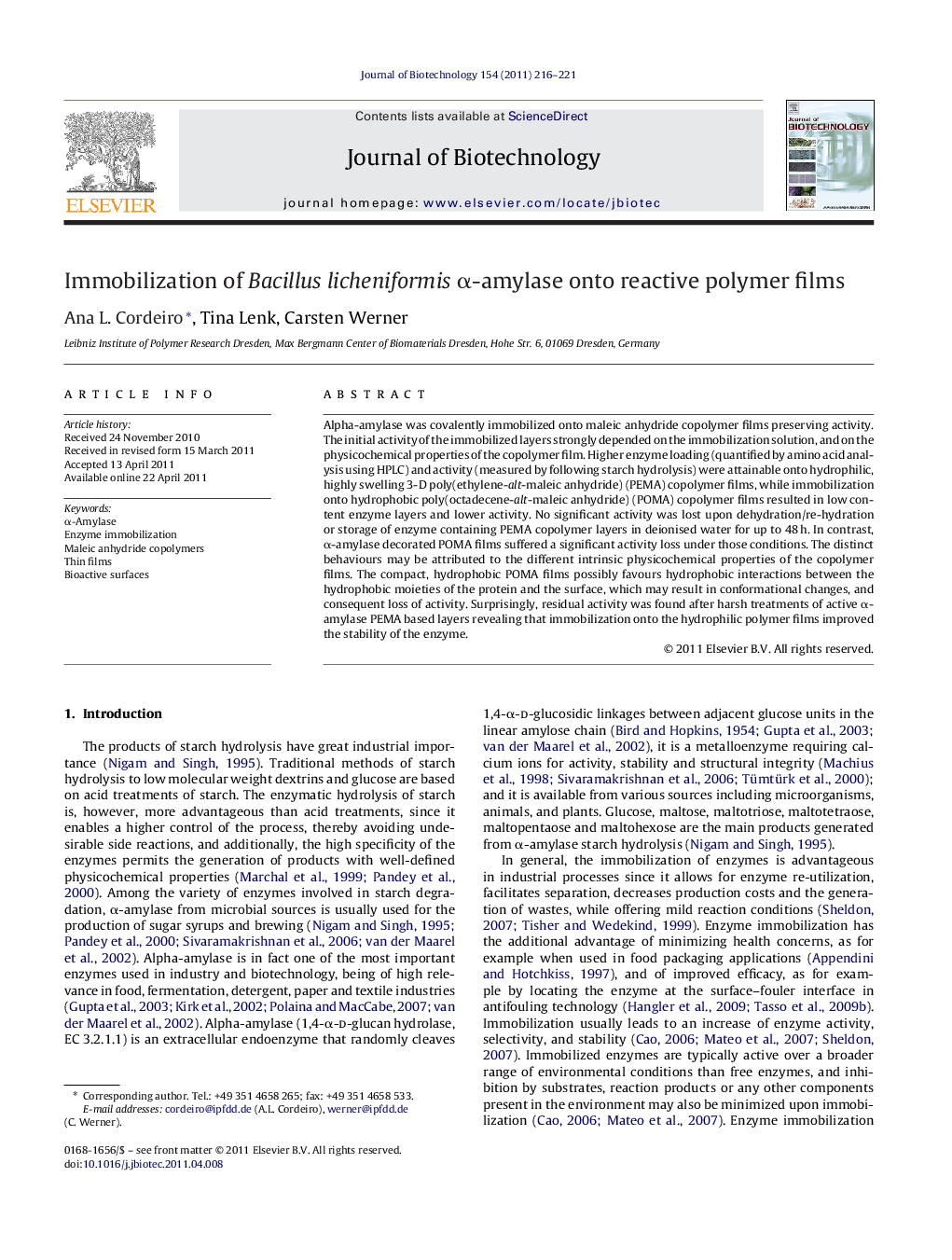| Article ID | Journal | Published Year | Pages | File Type |
|---|---|---|---|---|
| 24018 | Journal of Biotechnology | 2011 | 6 Pages |
Alpha-amylase was covalently immobilized onto maleic anhydride copolymer films preserving activity. The initial activity of the immobilized layers strongly depended on the immobilization solution, and on the physicochemical properties of the copolymer film. Higher enzyme loading (quantified by amino acid analysis using HPLC) and activity (measured by following starch hydrolysis) were attainable onto hydrophilic, highly swelling 3-D poly(ethylene-alt-maleic anhydride) (PEMA) copolymer films, while immobilization onto hydrophobic poly(octadecene-alt-maleic anhydride) (POMA) copolymer films resulted in low content enzyme layers and lower activity. No significant activity was lost upon dehydration/re-hydration or storage of enzyme containing PEMA copolymer layers in deionised water for up to 48 h. In contrast, α-amylase decorated POMA films suffered a significant activity loss under those conditions. The distinct behaviours may be attributed to the different intrinsic physicochemical properties of the copolymer films. The compact, hydrophobic POMA films possibly favours hydrophobic interactions between the hydrophobic moieties of the protein and the surface, which may result in conformational changes, and consequent loss of activity. Surprisingly, residual activity was found after harsh treatments of active α-amylase PEMA based layers revealing that immobilization onto the hydrophilic polymer films improved the stability of the enzyme.
